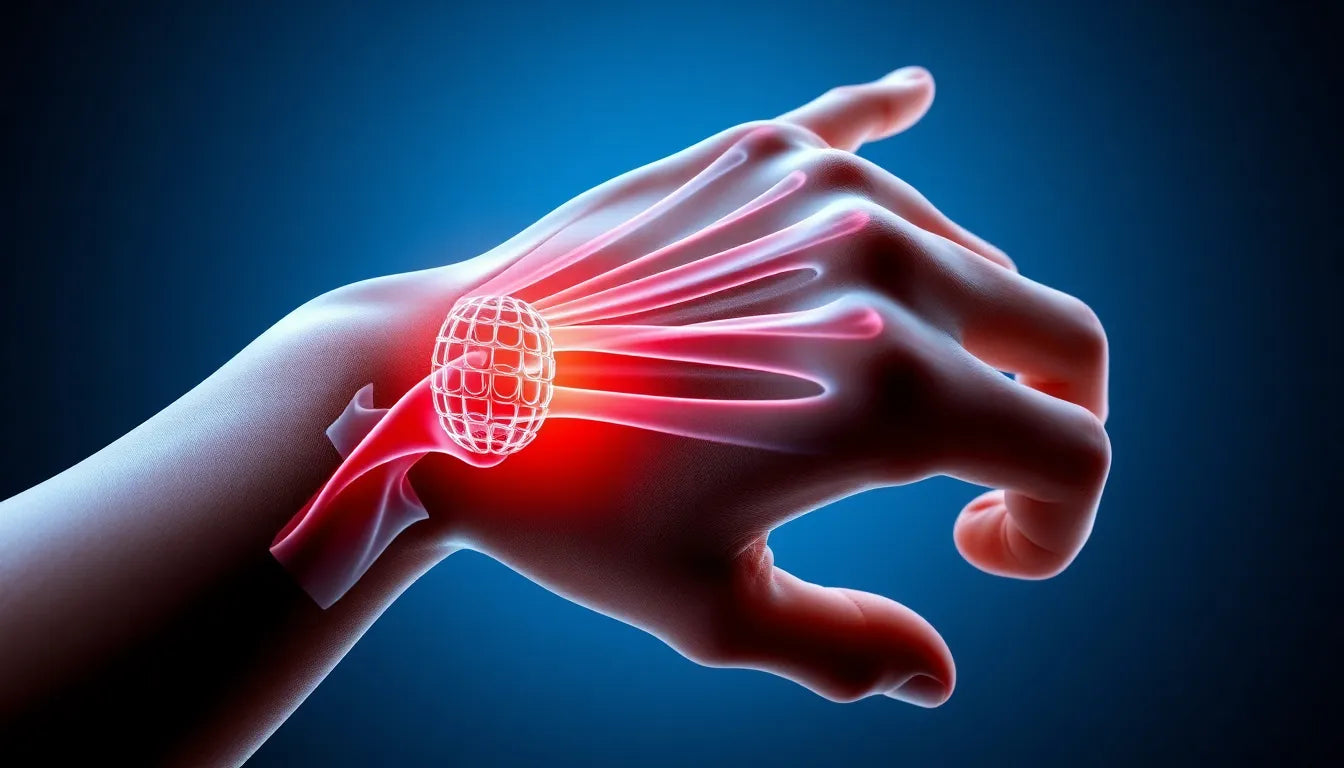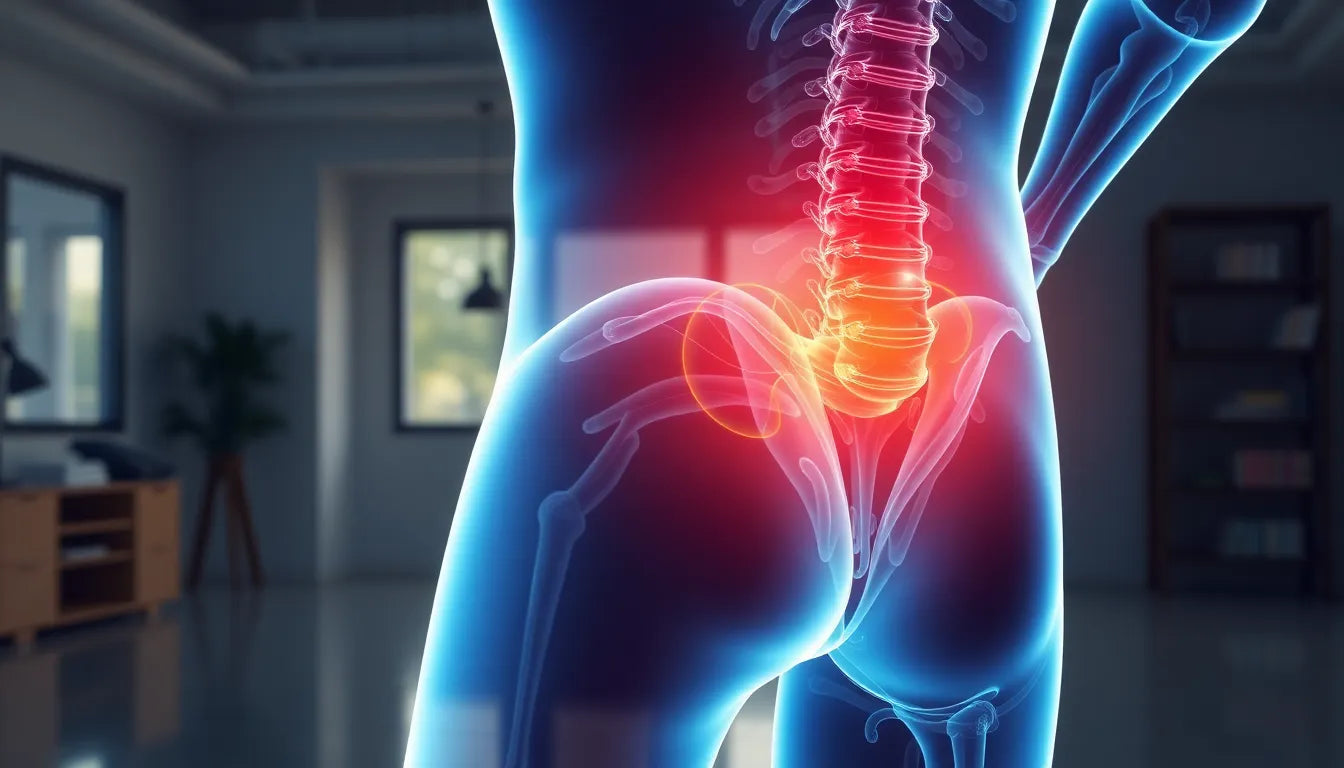When it comes to spinal health, understanding the intricacies of a herniated disc is crucial. A herniated disc occurs when the soft, gel-like center of a spinal disc pushes through a crack in its tougher exterior casing. This condition is not only common but also a significant source of discomfort for many adults. With numerous individuals experiencing back pain at some point in their lives, herniated discs are a prevalent issue that cannot be overlooked.
The purpose of this blog is to delve into effective solutions and treatments for managing the pain associated with herniated discs. Whether you're seeking information to better understand your condition or exploring treatment options to alleviate discomfort, this post aims to provide comprehensive insights tailored to your needs.
Recognizing the symptoms of a herniated disc
Identifying the symptoms of a herniated disc is the first step in addressing the issue. Common symptoms include persistent back pain, leg pain, and sensations of numbness or tingling. These symptoms often vary depending on the location of the herniated disc and the nerves affected. Early diagnosis and treatment are vital to prevent further complications that could lead to more severe health issues.
Understanding the dual nature of search intent for herniated disc information is essential. On one hand, there is an informational need where individuals seek to comprehend what a herniated disc is and how it affects the body. On the other hand, there is a commercial aspect where people are looking for solutions, treatments, and consultations to manage their condition effectively. This blog aims to address both aspects, offering valuable insights and practical advice.
As we explore the causes, risk factors, and various treatment options in the subsequent sections, it's important to remember that each individual's experience with a herniated disc can differ. Therefore, tailored solutions and professional medical advice are key to effective management and relief.
Causes and risk factors of herniated discs
Understanding the causes and risk factors associated with herniated discs is crucial for both prevention and management. One of the primary causes is the natural aging process. As we age, the discs in our spine lose water content, making them less flexible and more prone to tearing or rupturing with even minor strains or twists. Wear and tear from daily activities or repetitive movements can also contribute significantly to this condition.
Sudden strain or injury, such as lifting heavy objects improperly or experiencing a fall, can lead to a herniated disc. Additionally, certain risk factors can increase the likelihood of developing this condition. Genetics play a role, as some individuals may inherit a predisposition to developing herniated discs. Lifestyle choices, such as smoking, can also negatively impact disc health by reducing oxygen supply to the spinal tissues.
Occupational hazards are another important consideration. Jobs that require repetitive lifting, bending, or twisting, as well as those involving prolonged sitting or standing, can increase the risk of herniated discs. Here's a quick reference table summarizing the causes and associated risk factors:
| Causes | Risk Factors |
|---|---|
| Aging | Genetics |
| Wear and tear | Lifestyle choices (e.g., smoking) |
| Sudden strain or injury | Occupational hazards |
Diagnostic methods for herniated discs
Accurate diagnosis is essential for determining the appropriate treatment plan for a herniated disc. Healthcare professionals employ a variety of diagnostic methods to assess the condition. A physical examination is often the first step, where doctors check for signs of nerve irritation, such as muscle weakness or reflex changes.
Imaging tests are crucial for confirming the diagnosis. Magnetic resonance imaging (MRI) is the most common tool used to visualize the soft tissues of the spine, providing detailed images of the discs and surrounding structures. Computed tomography (CT) scans and X-rays may also be used to rule out other conditions or assess the extent of the disc herniation.
These diagnostic methods help healthcare professionals accurately identify the location and severity of the herniated disc, enabling them to formulate an effective treatment plan tailored to the patient's specific needs.
Exploring treatment options for herniated discs
Nonsurgical methods
For many individuals, nonsurgical treatments are effective in managing the symptoms of a herniated disc. Physical therapy is a cornerstone of nonsurgical management, focusing on exercises that strengthen the back muscles and improve flexibility, helping to alleviate pressure on the affected disc.
Medications can also play a significant role in pain management. Pain relievers, anti-inflammatory drugs, and muscle relaxants are commonly prescribed to reduce discomfort and inflammation. Lifestyle modifications, such as weight management, ergonomic adjustments, and posture correction, are essential components of a comprehensive treatment plan.
Epidural steroid injections may be considered for more severe cases, providing targeted relief by reducing inflammation and pain around the affected nerves. These nonsurgical methods aim to relieve pain and improve function, allowing individuals to resume normal activities.
Surgical methods
In cases where nonsurgical treatments fail to provide adequate relief, surgical intervention may be necessary. A microdiscectomy is a minimally invasive procedure that involves removing the herniated portion of the disc to relieve pressure on the nerves. This procedure is often recommended when symptoms are severe and debilitating.
A laminectomy, which involves removing part of the vertebra to relieve pressure on the spinal cord or nerves, may be considered for more extensive cases. It's important to weigh the benefits and potential risks of surgical options with a healthcare professional.
Here's a comparison chart highlighting the benefits and potential risks of nonsurgical versus surgical treatments:
| Treatment Type | Benefits | Potential Risks |
|---|---|---|
| Nonsurgical | Non-invasive, lower risk, promotes natural healing | May require longer recovery time, not effective for all cases |
| Surgical | Quick relief, effective for severe cases | Invasive, potential for complications, recovery time |
Choosing the right treatment option depends on the individual's specific condition and overall health. Consulting with a healthcare professional is crucial to making an informed decision that aligns with personal health goals and lifestyle needs.
Emerging research and innovations in herniated disc treatment
Recent advancements in medical research have opened new avenues for treating herniated discs, offering hope for improved outcomes. Innovations in regenerative medicine, such as stem cell therapy, are being explored for their potential to repair and regenerate damaged disc tissues. These cutting-edge treatments aim to address the root cause of disc degeneration rather than just alleviating symptoms.
Additionally, new surgical techniques are being developed to enhance precision and reduce recovery times. Minimally invasive procedures continue to evolve, allowing surgeons to perform complex operations with smaller incisions, leading to less postoperative pain and quicker rehabilitation. Ongoing research into the mechanisms of disc resorption also provides insights into how the body naturally heals from herniated discs, paving the way for future therapies that could enhance this process.
Living with a herniated disc: Tips for daily management
Managing daily activities with a herniated disc requires a careful approach to minimize pain and prevent further injury. Incorporating gentle exercises, such as walking or swimming, can help maintain mobility without placing excessive strain on the spine. It's crucial to listen to your body and avoid activities that exacerbate symptoms.
Ergonomic adjustments in your workspace and at home can significantly impact comfort levels. Consider using chairs with proper lumbar support and adjusting your computer screen to eye level to maintain good posture. Additionally, employing techniques like mindful breathing and meditation can support mental well-being, which is an essential aspect of coping with chronic pain.
Building a supportive network of friends, family, and healthcare professionals is vital. Sharing your experiences and seeking advice from others who understand your condition can provide emotional support and practical tips for managing daily challenges.
Frequently Asked Questions
What are the main symptoms of a herniated disc?
Common symptoms include back pain, leg pain, numbness, and tingling, which often worsen with movement. The severity and location of symptoms depend on which nerves are affected by the herniated disc.
How is a herniated disc diagnosed?
A herniated disc is diagnosed through physical examinations and imaging tests such as MRI, CT scans, and X-rays. These tests help healthcare professionals assess the extent of the herniation and formulate a treatment plan.
What are the best nonsurgical treatments for a herniated disc?
Nonsurgical treatments include physical therapy, medications like pain relievers and anti-inflammatory drugs, lifestyle modifications, and epidural steroid injections. These approaches aim to relieve pain and improve function.
When is surgery necessary for a herniated disc?
Surgery is considered when nonsurgical treatments fail to provide relief, and symptoms significantly affect quality of life. Surgical options are typically reserved for severe cases where nerve compression leads to significant pain or functional impairment.
Can lifestyle changes help prevent herniated discs?
Yes, maintaining a healthy weight, practicing good posture, and engaging in regular exercise can reduce the risk of developing herniated discs. Avoiding smoking and managing occupational hazards are also important preventive measures.
Sources
- "Herniated Disc: Diagnosis and Management." Radiology Assistant.
- "Treatment Options for Herniated Discs." Sciatica.com.
- "Keyword Analysis and Optimization for Health Topics." Semrush.
- "Systematic Review on Lumbar Disc Herniation." Orthopedic Reviews.
- "Herniated Disk in the Lower Back." OrthoInfo (AAOS).


















